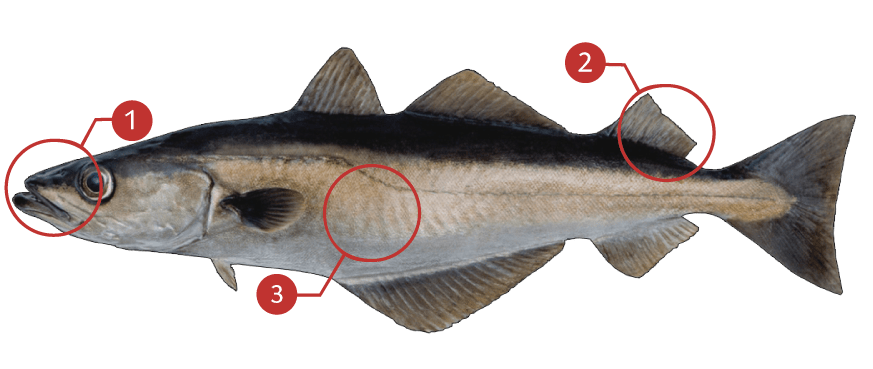POLLOCK
How to identify a Pollock
Pollock can be distinguished from other members of the cod family by three features. Its lower jaw projects beyond the upper jaw, its tail is forked, and its lateral line is quite straight, not arching above the pectoral fins. Young pollock have cod-like barbells on the chin, but these are small and usually disappear with age. The back varies from olive green to greenish brown. The flanks are a lighter yellowish green or gray.
Where to catch Pollock
The pollock can be found on both sides of the Atlantic, from Greenland and Labrador to Virginia on the west side, and on the east, from Iceland to northern Spain, including the Bay of Biscay, the English Channel, and the western Baltic and North Sea.Though it occurs in shallower water than either the cod or haddock, it is generally a deep or midwater fish occurring in depths of up to 600 feet. It will sometimes chase bait fish to the surface and smaller individuals are often seen milling about at the surface in large, tightly packed schools. In the western Atlantic south of Cape Cod, Massachusetts, off the U.S. east coast, pollock can be taken from depths of 300 feet to as little as 20 feet. North of Cape Cod where most of these fish are taken, they have even been caught by surf fishermen in the shallow surf of New England.
IDENTIFICATION

| | Lower jaw extends beyond the upper jaw |
| | Slightly forked tail |
| | Olive-green to brownish-green coloration |
TARGET AREAS
|
|
Acknowledgements: We thank TAKEMEFISHING.org (www.takemefishing.org), Wisconsin Department of Natural Resources, Indiana Department of Natural Resources for their contributions to these FISH FACTS.

